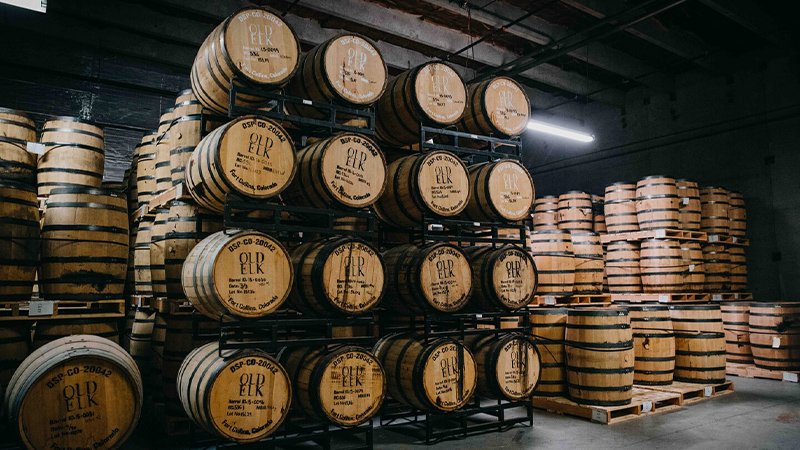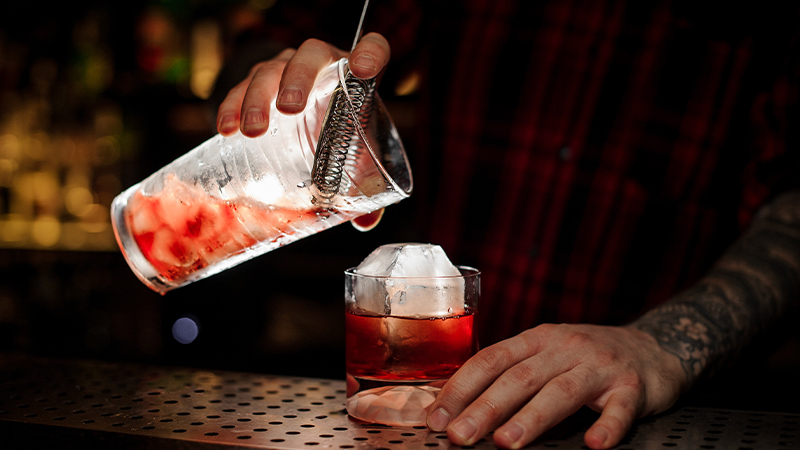Exploring Wheated Bourbon, a Style Often Hidden in Plain Sight

[ad_1]
All September on VinePair, we’re turning our focus to America’s spirit: bourbon. For our third annual Bourbon Month, we’re exploring the industry legends and innovators, our favorite craft distilleries, new bottles we love, and more.
You’ve likely enjoyed a few sips of wheated bourbon. Whether or not you realized it is a different story. Distilleries aren’t required to put the phrase “wheated bourbon” on the label, so some distillers simply choose to leave it off their bottle’s main design. It’s nowhere to be found on the front label of Maker’s Mark, nor is it present on bourbon’s most sacred prize, Pappy Van Winkle. Yet both are heavyweights in the category.
This is because wheated bourbons thrive under different aliases, such as smooth, mellow, or easy-drinking. They’re all apt descriptions. Once a casual imbiber or a serious aficionado finds a label or two that match these adjectives, words beyond a bottle’s core branding may be superfluous. Of course, this doesn’t mean the science behind the bourbon sub-category isn’t intriguing. It’s a fascinating process, one that’s driven by wheat’s unique influence on the other ingredients as they cohabitate in the barrel.
Don’t miss a drop!
Get the latest in beer, wine, and cocktail culture sent straight to your inbox.

The Science Behind Wheat
By law, all bourbon must contain at least 51 percent of corn in its mash bill. The other 49 percent consists of grains used at the distiller’s discretion. In traditional three-grain bourbons, distillers commonly build the remaining mash bill with rye, barley, and additional corn. The rye acts as a secondary flavoring grain, and its naturally bold flavor imparts sharp jabs of spice into the juice. To make a wheated bourbon, distillers replace rye with wheat, which possesses milder flavors. The swap lightens bourbon’s punch, resulting in a softer palate expression.
Wheated bourbon also carries a uniquely sweeter flavor profile, a characteristic attributed to the way wheat and corn play off each other. Wheat’s gentle characteristics allow corn’s inherent sweetness to shine through the liquid. At the same time, the wheat tends to cut into the amount of corn used beyond the legally required amount, which can positively impact the complexity of the sweet notes. “The lower corn content exposes characteristics that you may not have noticed before on non-wheated bourbons, like floral and fruity flavors, even honey and toffee,” says Greg Metz, head distiller at Old Elk Distillery in Fort Collins, Colo. “It can also bring out a little more oak and vanilla from the barrel.”
This level of flavor complexity isn’t merely brought about by the quantity of wheat used. Factors like growing season, harvesting time, and the grain’s field location can influence a wheated bourbon’s development. “The term ‘terroir’ is usually associated with wine, but terroir plays a role in the mash bill,” says David DeFazio, co-founder of Wyoming Whiskey in Kirby, Wyo. “The barrel still leads the way, but the wheat’s terroir brings its own unique influence into the maturation process.”
This confluence of softness, sweetness, and complexity make wheated bourbon an easy entry point into the bourbon category, whether that introduction begins with a straight pour or in a classic bourbon cocktail like the Old Fashioned or Boulevardier. This is not lost on distillers making the juice. “Wheated bourbon cracked the door open for a lot of people,” says Ryan Friesen, head distiller at Blinking Owl Distillery in Santa Ana, Calif. “Once they start getting into it, they can hopefully get comfortable enough to start trying harder, more complex non-wheated expressions.”

Knowledge Is Power
Exploring wheated bourbon on one’s own may be a touch difficult due to the category’s sporadic bottle identification. However, the category isn’t completely shrouded in label-less mystery. Several distilleries put the term (or language somewhat referencing the term) on their wheated bourbon expressions, including well-known brands of varying price ranges, such as W.L.Weller, Larceny, and 1792. The phrase also finds its way onto the bottles of Wyoming Whiskey and Old Elk.
The category can also be discovered without help from the label. All it takes is uttering a few simple adjectives to a distiller, bartender, or other spirits aficionado. “Whenever people come into our tasting room and start asking about smooth or soft bourbons, I know what style of bourbon they’re looking for,” says Friesen. In Blinking Owl’s case, customers in the tasting room may not realize they’re drinking the style at first, as the distillery’s expression does not contain the phrase “wheated” on its bottle. In this case, the lack of terminology serves a purpose. “When we pour customers a taste of our wheated bourbon, it becomes a conversation starter,” Friesen says. “We can then use that conversation as a launching point to educate our guests about bourbon and spirits if they’re interested in learning more.”
In a way, this sentiment sums up wheated bourbon’s presence in the consumer market. Those geeky enough to know what the term wheated bourbon means will appreciate seeing it on a label. Those who aren’t interested in the science of the sauce won’t care, as long as the bourbon in the bottle is smooth, soft, and satisfying. Neither sentiment is wrong if it brings joy to the imbiber. “I don’t think the majority of our customers necessarily want or even need to know if it’s wheated or not,” DeFazio says. “At the end of the day, either they like it, or they don’t. That’s what matters.”
[ad_2]




